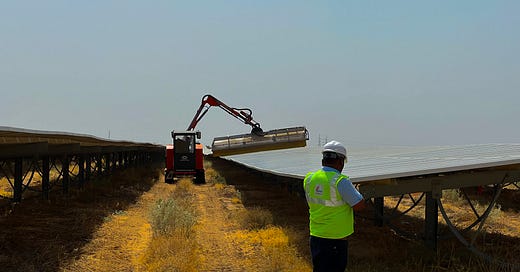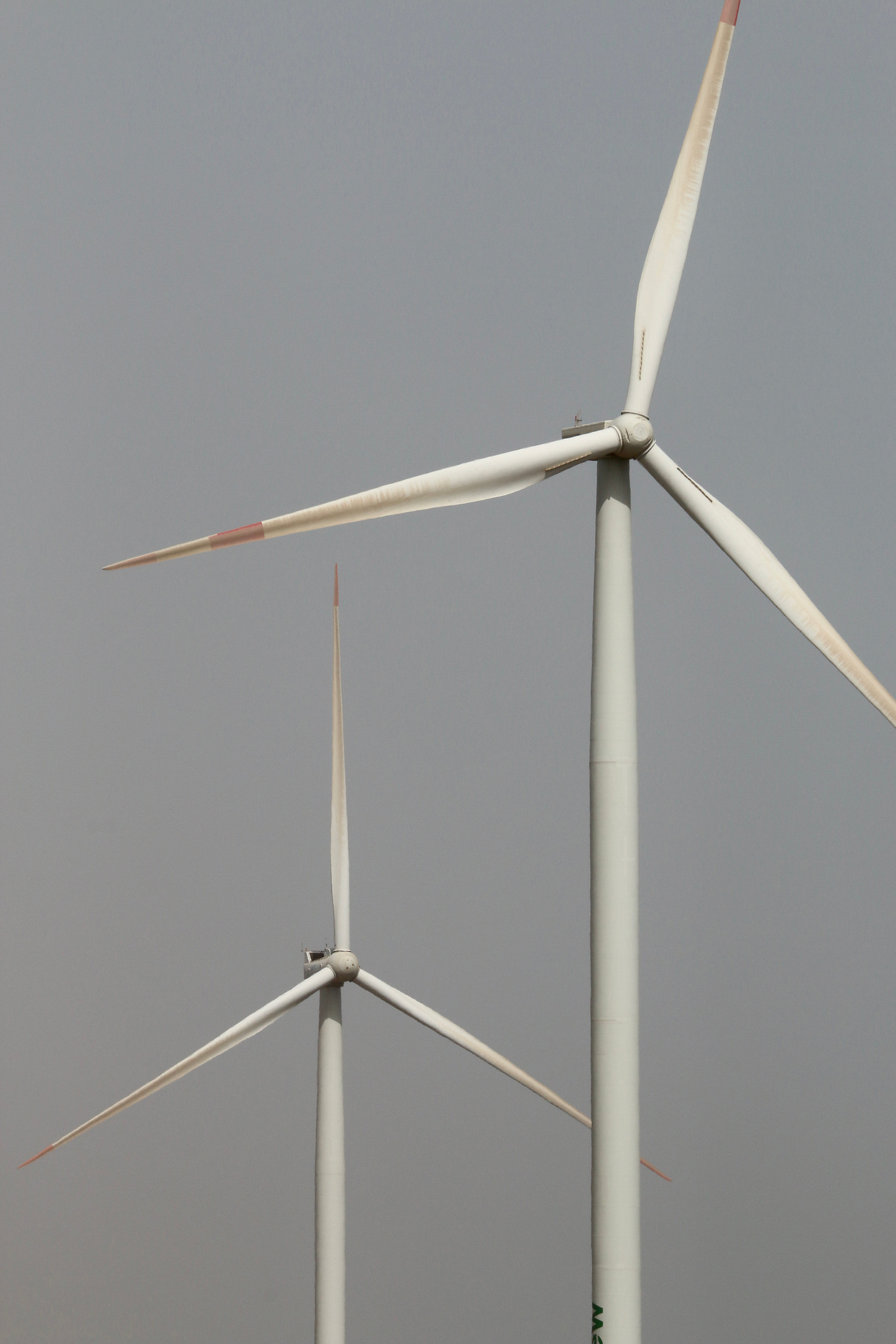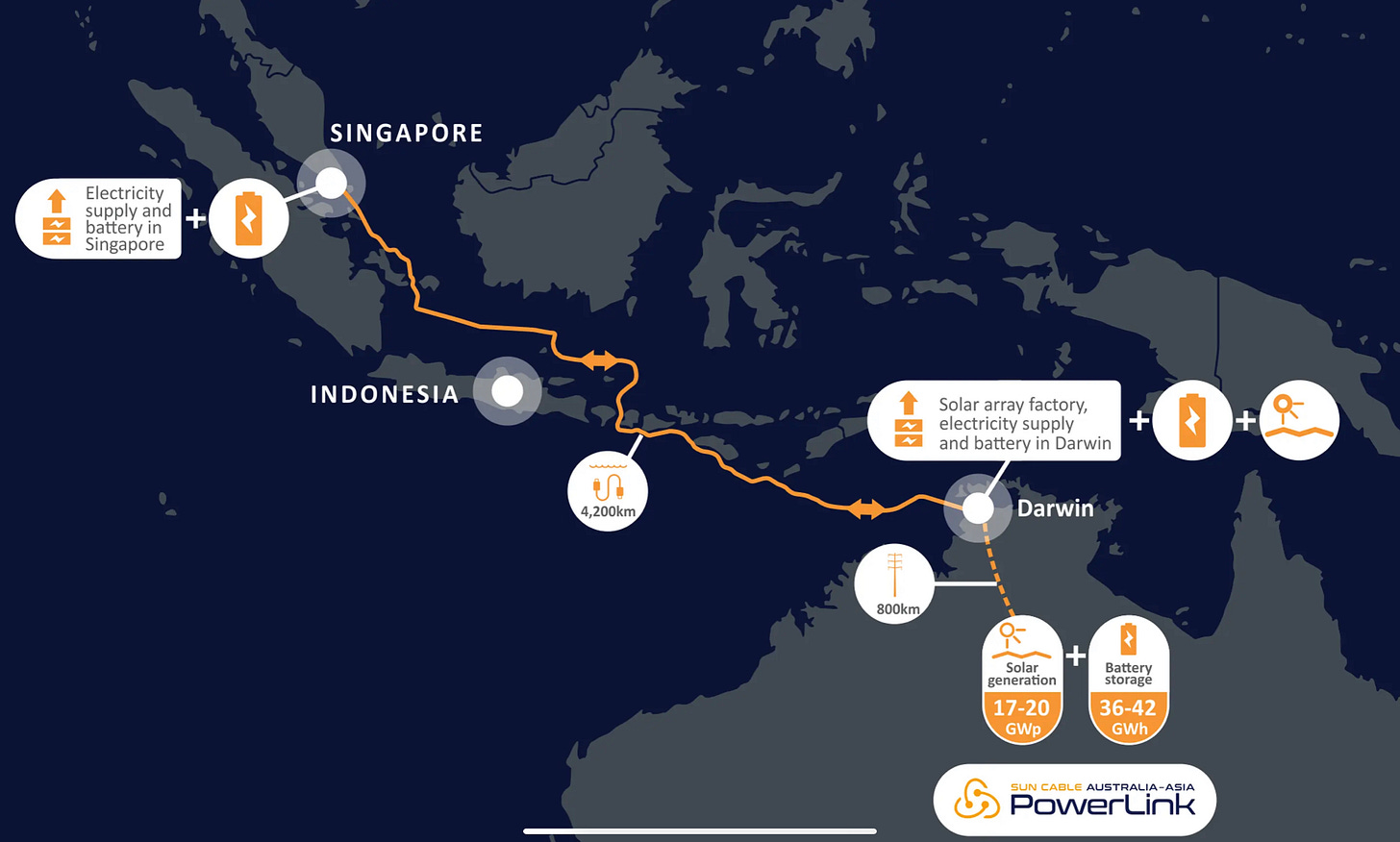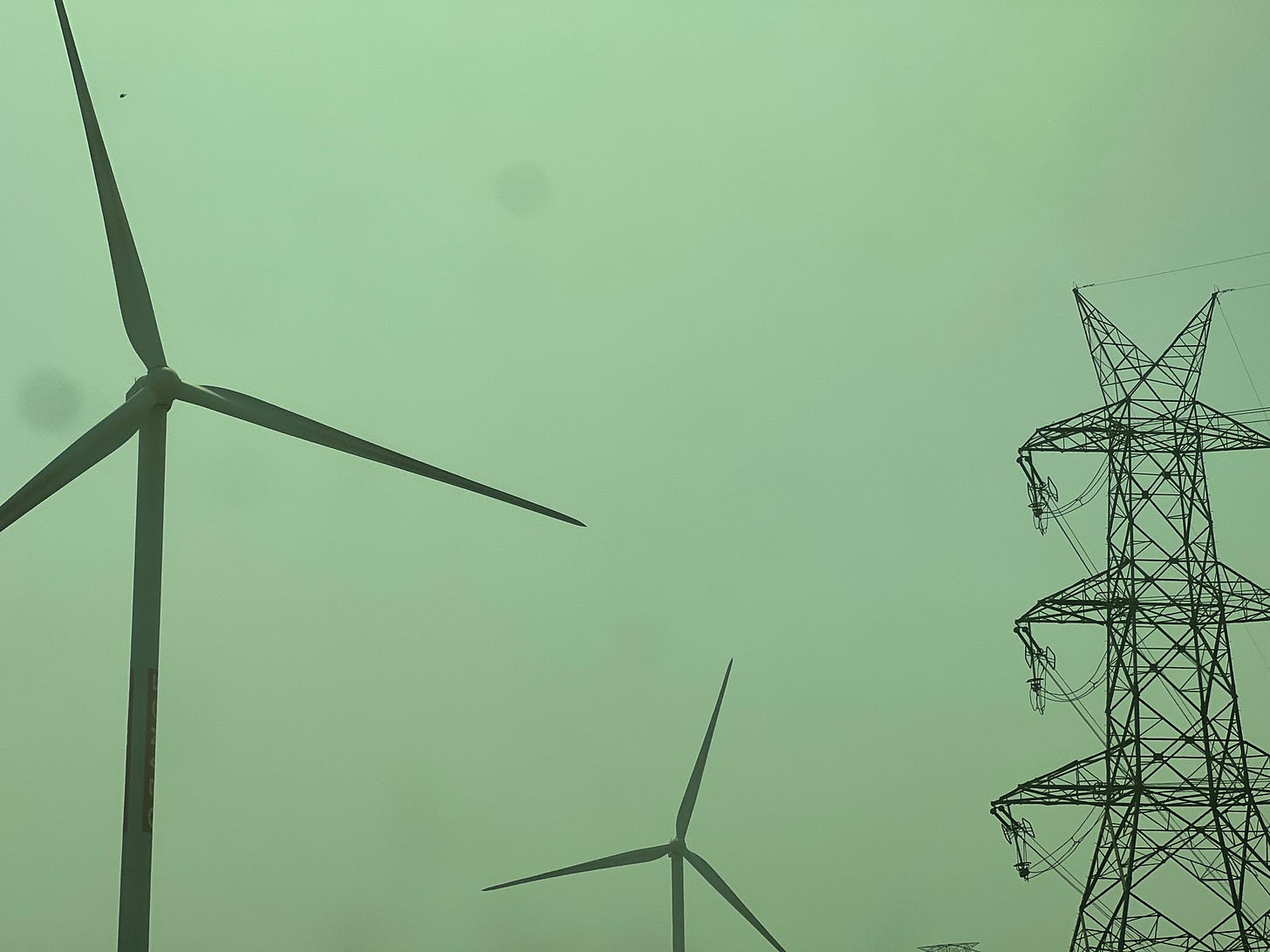From Gujarat to the World (and back again)
India’s renewable plans include dreams of a solar-powered grid that stretches from the Saudi Arabia to Singapore.
We return to our India journey in this post, picking up where we left off in the country’s northwest, a major energy center. Recent subscribers may want to peruse back through posts at least to the beginning of the year when I landed in India to recap the journey. I finished in August, but am still catching up on chronicling the second half of my travels. Meanwhile, if you haven’t seen my recent piece in The Columbia Journalism Review arguing for an end to fossil fuel advertising, you can read it here.
With that, back to India’s northwest for one last stop.
We’ve spent considerable time in India’s sunny and windy northwest as part our ongoing climate and energy journey through the subcontinent. The region has a key place in India’s energy landscape and critical role in its energy transition.
The northwest is home-base for India’s current oil-and-gas industry, but also hosts the country’s fastest-growing renewables staging ground. The state of Gujarat will help determine whether manufacturing jobs grow as part of the renewables revolution, and what role India’s ambitions in hydrogen will play in the energy transition.
Before leaving, though, I wanted to make one more point about the global renewable energy economy that is now developing. A big driver of renewable energy growth these days is energy security. This is a direct result of the war in Ukraine. But it doesn’t mean we’re headed for a world of national energy islands operating alone, but rather one likely interrelated in new and perhaps healthier ways.
Countries in Europe and beyond have woken up to energy security as one of the biggest benefits of renewable energy. This is especially true in Europe, which is experiencing the vulnerability that came with dependence on an energy partner as antagonistic as Russia. The EU imported 40% of its gas and 30% of its oil from Russia before the war. Six months later, that’s down to less than 10% for gas and headed toward zero for oil with a ban on Russian imports phasing in from earlier this month. The lesson has not been lost on China and India, the world’s first and third-largest energy consuming countries and the two biggest importers of energy.
These energy consumers have responded partly by reembracing coal, something they all produce to some extent, particularly India and China. But however zealously they’re turning back to the dirtiest of fossil fuels in this pinch — really zealously in the case of India and China, less so in the case of the EU — it’s also obvious none of them see coal as more than a short-term, or at best medium-term, fix.
A better solution, they all realize, is a massive, historic move to renewables. The International Energy Agency just upped its global forecast for renewable energy to 85% growth over the next five years, almost one-third faster than it was predicting before Russia’s Ukraine invasion. Europe is leading the charge. It’s aiming for 45% of its energy to come from renewables by 2030, up from the 40% it was shooting for before the invasion. China has raised its renewable capacity targets by 35% over last year’s plans, the IEA says, and will account for fully half the new renewable energy capacity installed globally over the next five years. India could double renewable energy capacity in that time. And the US, the world’s largest producer and second-largest consumer of fossil energy, will be installing twice as much renewable energy annually in 2027 due to the climate and infrastructure programs the Biden administration passed this year, according to the IEA.
Still, none of this means the world we are headed for won’t include trade in energy — and not just lingering trade in fossil fuels during the decades needed for a transition to clean energy.
When I visited Gujarat state’s Climate Change Department, one of the things the man in charge, joint secretary B.H. Talati, wanted to talk about was importing and exporting renewable electricity. Certainly, his near-term focus was building up Gujarat’s renewable energy capacity. He said Gujarat expects to be producing 100 gigawatts of renewable power by 2030 — far more energy than the state will be consuming. That means lots of power would be shipped outside the state, at first to other parts of India via a dedicated “green beltway” high-voltage transmission line.
But Talati also said the aim is to eventually link up the Indian power grid with renewable power overseas, in the United Arab Emirates and Saudi Arabia to the west and to Southeast Asian countries such as Thailand, Myanmar and Singapore to the east. This reflects Indian Prime Minister Narendra Modi’s “One Sun, One Grid, One World” initiative — OSOGOW, for the initiated! — a vision India’s leader has been promoting since the Paris Climate conference as part of an initiative called the National Solar Alliance.
Seven years on, it’s still just an idea, but an intriguing one: like-minded countries could join their power grids, allowing countries that can produce lots of renewable energy — far beyond their own needs, particularly at certain times of the day — to ship that power overseas when it’s most needed. The idea is just one of several initiatives — some actually in the works — for sending renewable energy from places where it’s most easily produced to places that need it. One project is planning to ship solar power from Australia’s northwest — one of the sunniest regions in the world — to Singapore via an undersea cable. Another would send solar power from a desert in Morocco — one of many prime solar hotspots in North Africa — to the United Kingdom.
Among the benefits of such projects would be the ability to better match supply and demand for power. In theory, the late afternoon solar power produced in Gujarat could be used to meet electricity demand in Singapore after dark. After the sun sets in India, it would then turn to the Arab Gulf for solar-generated power, while the Gulf could turn to North Africa once the sun sets on solar panels in Saudi and the UAE. Europe and the UK, which need imported power throughout much of the day, would draw from North Africa’s sun-soaked deserts pretty much full time.
These projects are obviously complicated and could prove to be too expensive. The Australia-to-Singapore transmission cable, which is furthest along in the planning stages, is pegged at $22 billion and could power as many as three million homes, providing 15% of the city state’s electricity needs.
And, of course, these sorts of cross-border energy flows would reintroduce some of the same vulnerabilities as good old fossil fuels. The cables could be sabotaged, just as two gas pipelines from Russia to Europe were blown up earlier this year. And countries would have to be mindful of linking up with countries with which they’re not on friendly terms, a la Europe’s gas ties to Russia. But this sort of cooperation could work the other way, cementing ties between friendly countries in the same way “friend-shoring” is intended to do with trade flows. India, the UAE, Singapore and Australia are all close friends with the US, which could help finance some of this infrastructure. It’s the kind of thing the UAE might also contribute funds to, as part of its own renewables expansion and goals going into the COP28 climate conference it will be hosting next fall.







